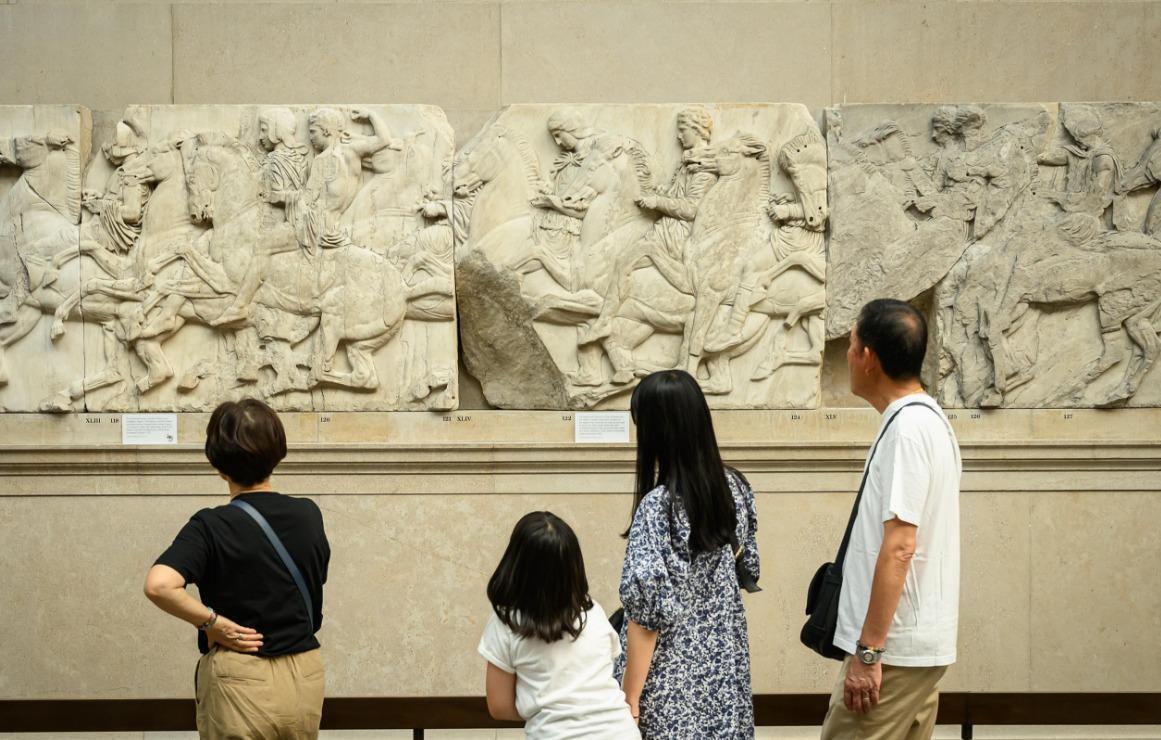The British Museum: controversies, crises, missing artifacts
LONDON

The number of artifacts that have disappeared from the British Museum is estimated at 2,000, chairman of trustees George Osborne said on Aug. 26, admitting the collection did not have a complete catalogue.
The U.K.'s former chancellor described the missing pieces as "small items of jewelry, gems, bits of gold that were not on public display.”
He told BBC radio it was still not clear exactly how many items had gone astray.
"I will give you an estimate of around 2,000. But I have to say that's a very provisional figure," Osborne said.
"We have started to recover some of the stolen items, which is a silver lining to a dark cloud."
Museum director Hartwig Fischer resigned on Aug. 25, admitting the institution did not act "as it should have" on warnings that items had gone missing.
The central London Museum said last week it had dismissed a staff member and alerted the police after artefacts were found to be "missing, stolen or damaged.”
One of the British capital's biggest tourist draws, the museum is best known for housing collections that include the Rosetta Stone and the Parthenon Marbles.
Osborne attributed management's failure to act on warnings to "groupthink" that "just couldn't believe that an insider was stealing things, couldn't believe that one of the members of staff were doing this.”
"We believe we've been the victim of thefts over a long period of time and, frankly, more could have been done to prevent them," he said, adding that security at the museum had been tightened.
The antiquarian community was cooperating with the museum to help return some of the missing pieces, he said.
The Metropolitan Police confirmed on Aug. 24 that a man had been interviewed in connection with alleged thefts.
The force said no arrests had been made and it would continue to work "closely" with the British Museum as inquiries continue.
The British Museum, whose director - resigned on Aug. 25, has gone through a series of controversies and crises over the past decades.
Here are some of the most spectacular:
Perhaps the British Museum's most high-profile controversy has been over Greece's decades-long claim for the return of the 5th-century BCE Parthenon marbles.
The fight was famously launched by the late Melina Mercouri, the celebrated actress who also served as culture minister, and has been taken up, unsuccessfully by successive Greek governments.
The museum's decision to loan the works to Russia's Hermitage Museum in Saint Petersburg in 2014 rubbed salt in Greece's wound.
Greece intensified its campaign after in 1999 it accused British curators of causing irreparable damage to the artefacts in the 1930s by trying to clean their marble surfaces with wire brushes.
Museum Curator at the time Ian Jenkins said 40 percent of the marbles had been "affected" by the cleaning process.
The British Museum has refused to return any of its famed collection of Benin bronzes, sacred sculptures and carvings removed from the former kingdom of Benin in southern Nigeria in 1897 during the colonial era.
However, pressure on the Museum increased in 2002 when it admitted to selling 30 pieces of the bronze over the years to private individuals, some for under £100 pounds each.
In the late 1990s, as subsidies from the government and the National Library moved out, the museum found itself with a 160-million euros hole.
It turned to private investors and also to the National Lottery, but that was not enough.
It eventually dropped plans to impose a five-pound entrance fee, with the help in 1998 of a million-pound subsidy from the new Labour government.
On June 17, 2002, the Museum closed its doors for a day due to a strike, the first time in its 249 years of existence.
More than four fifths of its 750 employees voted to strike against a rescue plan under which spending would be slashed by 6.5 million pounds and 150 jobs cut.
In the summer of 2002 a burglar took advantage of the lack of a security guard to make off with a 2,500-year- old Greek statue.
The 12-centimetre-high statue of a head was bought by the Museum in 1922 and its estimated worth was £25,000.
The theft highlighted the underfunded museum's security concerns.
In October 2004 thieves stole a valuable collection of ancient Chinese jewelry and artifacts from the museum.
The theft took place while the museum was open to the public, with around 15 Chinese items such as hairpins and fingernail guards dating from the 12th- to the 16th-century taken.
Police said it was possible that the items were stolen to order for a private collector.
















